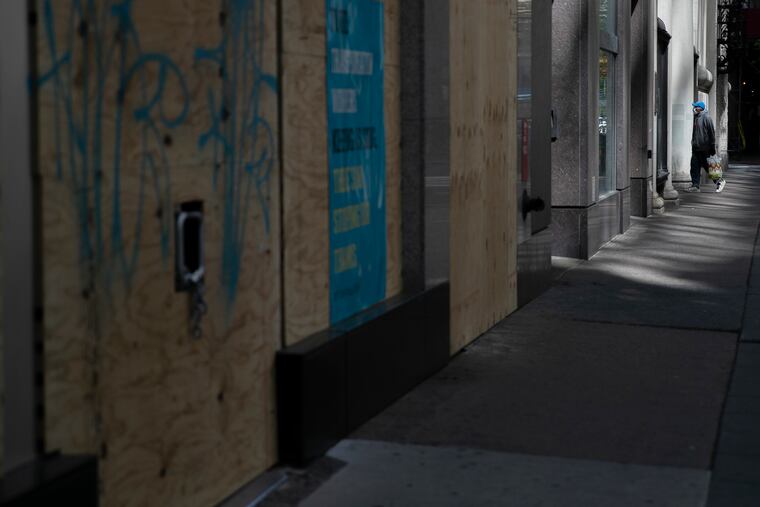Pennsylvania’s coronavirus data are less reliable, robust than other states | PolitiFact
Do Pennsylvanians venturing out of their homes for the first time in weeks know enough to keep themselves and their families safe? And is the government making the right call on which places to reopen first? We looked at different types of data released by the state Health Department to find out.

By Friday, more than half of Pennsylvania’s counties will have lifted restrictions that kept businesses shuttered and residents stuck at home since the coronavirus swept through the state in early March.
People in those 37 counties, including Allegheny, Indiana, and Westmoreland, will once again be allowed to gather in small groups and patronize some businesses, although gyms, nail salons, and dine-in restaurants are still off-limits.
The newfound freedoms raise important questions, given that the virus hasn’t been vanquished.
Do Pennsylvanians venturing out of their homes for the first time in weeks know enough about where the invisible virus may still be lurking to keep themselves and their families safe? And is the government making the right call on which places to reopen first? PolitiFact Pennsylvania looked at different types of data released by the state Health Department to find out.
Every day, the department updates the state’s official tally of coronavirus cases and the number of deaths caused by the virus. But in Philadelphia, the state’s most populous county, the true number of deaths is uncertain. Figures reported locally and by the state have been out of sync for weeks.
As Spotlight PA reported, over a one-week period, Philadelphia’s Public Health Department recorded a high and rising number of deaths caused by the virus, while the state Health Department’s count for the city remained stuck at a much lower number.
» READ MORE: Pa.’s death toll for Philadelphia lags behind city’s count, part of state’s ongoing struggle to compile timely data
Whether an area’s number of deaths per day is still rising and how fast is central to many individuals’ thinking about being in public, and imprecise data on deaths could lead to overconfidence about an area’s safety.
Philadelphia and the suburban counties that surround it must continue following Gov. Tom Wolf’s stay-at-home order until June, at the earliest, so there’s still time to sort out the discrepancy. But it remains unclear when or how state and local officials will reconcile the differences in their data.
Another data point residents might review to determine how comfortable they feel returning to public life is whether there are any coronavirus hot spots in their area.
Unlike other states, Pennsylvania has so far refused to release the names of nursing homes and food-processing plants with clusters of coronavirus cases, two settings where the virus can spread easily among workers and be brought back to the surrounding community.
But city records obtained exclusively by The Inquirer show just how much damage the virus has done in Philadelphia’s long-term care facilities.
» READ MORE: Secret data reveal how COVID-19 swept through Philadelphia nursing homes
The disease tore through almost all of them, infecting 1,800 seniors. As of late last month, 374 nursing-home residents had died of the virus, accounting for more than half of the city’s COVID-19 deaths.
Had officials not inadvertently made the data available online, people who live near these facilities, which are in neighborhoods across the city, would never have known about the remote but potential danger posed by the workers who enter and exit daily.
A report released May 1 by the Centers for Disease Control and Prevention shed new light on how the virus has affected the state’s meat processors. Across Pennsylvania, 22 meat- and poultry-processing plants employed workers sickened by the coronavirus, the report says. The state with the next-highest number of affected plants, Georgia, has almost half as many affected facilities.
Still, the state Health Department won’t tell the public where those facilities are.
» FAQ: Your coronavirus questions, answered.
Public health officials in other states have been more transparent. Knowing how easily the virus can spread along a production line where workers stand shoulder-to-shoulder, officials in Georgia, Iowa, and South Dakota have released not only the names of food-processing plants affected by the virus but also the number of sickened workers.
Pennsylvanians who live near the plants or call workers from this industry their neighbors are still in the dark.
Recent polling shows that large majorities of Americans remain resistant to reopening the economy, fearing the impact the move may have on human life. The more information people have about deaths caused by the virus and the locations of hot spots to avoid, the more confident they’ll feel leaving their homes.
Pennsylvania’s data on coronavirus deaths have been unreliable or incomplete and the Health Department’s decision to keep secret the details of outbreaks at nursing homes and food-processing facilities is stirring public outrage. The state has more to do to arm citizens with the information they need to navigate life after the worst of the pandemic has subsided.
Our sources
Spotlight PA, “Pa. officials will allow Pittsburgh region to relax coronavirus-related restrictions,” May 8, 2020
Spotlight PA, “Pa.’s death toll for Philadelphia lags behind city’s count, part of state’s ongoing struggle to compile timely data,” May 2, 2020
The Philadelphia Inquirer, “‘Tinder boxes’: Secret data reveal how COVID-19 swept through Philadelphia nursing homes,” May 3, 2020
The Philadelphia Inquirer, “Pa. has more coronavirus cases among meat plant workers than any other state, CDC says,” May 1, 2020
Email interview with Pennsylvania Department of Health Spokesman Nate Wardle, May 4, 2020
ABC News, “Reopening the country seen as greater risk among most Americans: POLL,” May 8, 2020
PolitiFact is a nonpartisan, fact-checking website operated by the nonprofit Poynter Institute for Media Studies.